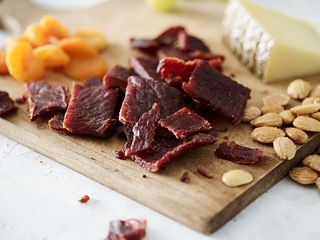Iowa's Checkoff Doing What the National Checkoff Can't
When Iowa producers launched their Iowa-specific fifty cents per head checkoff in 2017, one of the driving reasons was to fund research that would help drive producer profitability.
Dean Black, who manages a field-to-finish feedlot and operates 3,300 acres with his brother in Calhoun County, played an instrumental role in getting feedback from other producers before the launch of the Iowa checkoff.
"We sent questionnaires out to Iowa's producers as we were leading up to the state checkoff vote," said Black of Somers, Iowa. "Loud and clear, we heard that Iowa's cattlemen wanted production research. That is something we cannot do with national checkoff investments."
"The research funded by the Iowa checkoff is also something that no one Iowa producer could do on their own," said Black. He added that by pooling checkoff investment resources, Iowa cattlemen get answers to real-world operational problems right in their own state without having to worry about priorities of others.
Peer-Led Decision Making to Finance Research
The state’s producer research is directed by a committee of Iowa producers and Iowa partners including university professors, researchers and veterinarians.
“I like to emphasize that checkoff dollars are being directed by our peers,” said Black. “Our committee includes cow/calf guys, backgrounders, feedlot producers. These are cattlemen just like us.”
Before the committee can fund a research project, it has to decide what to research.
“Our committee puts out a notice to academics and researchers at Iowa State and at colleges and universities in nearby states to let them know we are going to have funding available,” said Black. “We ask them to turn in their ideas for research programs and projects.”
Once those submissions have been compiled, the committee meets to go through the requests. “We prioritize the funding requests based on what’s the best use of checkoff money to help operations like our own,” Black explained.
The group requires researchers to report on their finding part-way through their project and to publish a final report which can be shared with producers.
Types of Research of Interest
One of those researchers who has worked closely with the IBIC production research committee is Dr. Dan Thomson at Iowa State. With both a veterinary degree and a Ph.D. in ruminant nutrition, Thomson is an advocate for the beef research process as well as a recipient of research funding.
“Our research has unlocked answers to improving neonatal calf health, pinkeye cases in cow herds and defined the pathogens associated with hairy heel wart in feedlot cattle,” said Thomson. “We have recently received a final report comparing performance, health, and economics of cow herds in confinement housing versus pasture-based systems.
Hot-Topic Research on the Horizon
Black noted that the research committee got pretty excited recently when the group discussed a potential project about grazing cover crops of beef feed. “Cover crops are such a hot topic that we were all curious how to make it work in livestock production,” Black said.
Thomson notes that, while the final research has not yet been published, there are already some clear takeaways for the beef industry in using cover crops.
“Cover crops are excellent for sequestering carbon from the environment, improving our greenhouse gas mitigation on the planet. Cattle can graze these cover crops to improve performance and decrease feed costs,” said Thomson. “The sustainability story of cattle, manure, soil, and cover crops are an excellent example of how cattle are up-regulators of carbon and great for the environment.”
Research for real producers
Black appreciates the collaborative work done by the researchers and the researchers are excited to share their work with producers. “Once our projects are complete, we work to get the research results to the producers. Then, those producers’ biggest response is “thank you, I’m going to try that.”
Thomson and Black note that IBIC’s research is not just about putting information on paper. It is about putting the research into action on Iowa’s feedlots and cow/calf operations.
“We are here to help with the implementation phase,” said Thomson. “Every farming system is different and modifications must be made. Working together, we listen to the problems, conduct the research and then get the implementation rolling on farms or ranches. This leads us to the next question and pushes us for continuous improvement.”
“All of this research is important for Iowa beef producers looking for innovative ways to bring a return on investment to their farms and ranches,” Thomson said.
To learn more about IBIC’s producer-focused research programs, visit https://www.iabeef.org/cattlemens-corner/production-research.

Share This Page